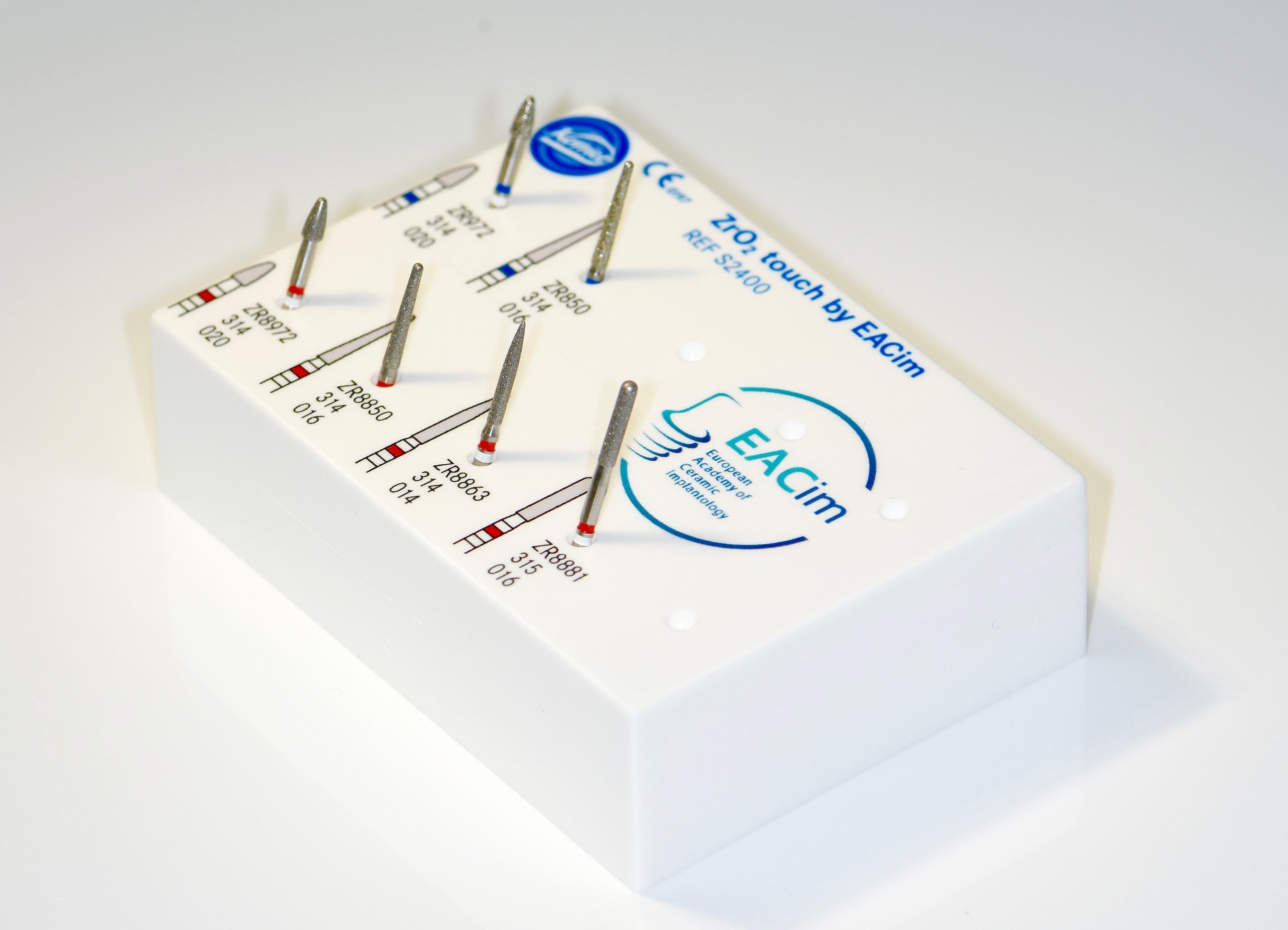The KOMET S2400 “ZrO2 touch by EACim” mill box for zircone implants and pillars designed by and for members of EACim.
by Dr Philippe Duchatelard.
 Zirconia is the hardest material in the arsenal of materials used to make dental implants. In its monobloc form, the three-dimensional positioning conditions the prosthetic success without impinging on the biological rules.
Zirconia is the hardest material in the arsenal of materials used to make dental implants. In its monobloc form, the three-dimensional positioning conditions the prosthetic success without impinging on the biological rules.
It is common to have to correct a vestibular edge of the shoulder to avoid over-burial and follow the mucosal festoon for esthetics or a vestibular edge of the abutment to respect a more palatal or lingual insertion axis and spare the vestibular bone wall. These corrections must be limited in volume and time so as not to permanently damage the zirconia and jeopardize its mechanical strength by hindering crystallographic healing.
The Komet© catalog, world leader in dental burs, has specific white ring burs for zirconia machining. They have a diamond grain concentration of more than 80% compared to conventional burs with a reinforced binder. This configuration allows zirconia to be machined without creating a spark, which means that the cutting performance is optimized to limit the formation of cracks or intergranular fissures.
Two choices of granulometry, red (fine size crystals, 46 microns) and blue (medium size crystals, 126 microns), have been selected in four shapes adapted to the volumes and situation of usual retouching and to obtain a final polished surface finish, two references are available in both colors for finishing. The recommended speed is around 160000 rpm (red ring contra-angle), under high flow spray 50ml/min, low pressure, 2N. There is no silicone polish to avoid any swarf pollution of the mucosa.
In the first intention and in the great majority of cases, the red grain will be used, that is why it composes the first line of the box with four references of burs. Technically, it is preferable to space out the burs to control the thickness of the corrections, given the performance of these burs and to avoid any overheating.
The photos show the ZR 8863 (Fig. 1) and ZR 8972 (Fig. 2) burs in clinical situations, the result on the shape of the abutment in the mouth (Fig. 3) and the S2400 set (Fig. 4).












